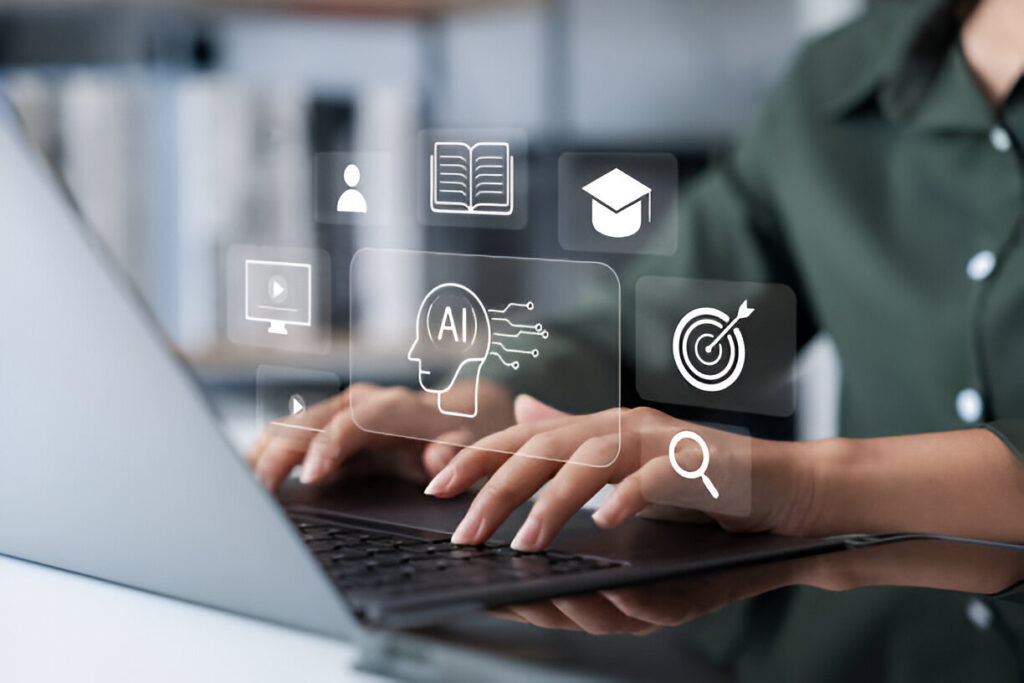In 2025, technology in education is no longer a futuristic concept—it’s the cornerstone of a more engaging, accessible, and personalized learning experience. As schools and universities adapt to rapid digital transformation, educators are leveraging tools like artificial intelligence, virtual reality, and data-driven platforms to meet learners where they are.
This article explores how emerging technologies are enhancing education by tailoring instruction, improving collaboration, and ensuring equitable access in both traditional and online classrooms.

A New Era of Personalized Learning
One of the most significant changes brought by technology in education is the shift toward personalized instruction. AI-powered systems analyze student performance in real time, allowing educators to adapt content based on each learner’s strengths and challenges. From elementary classrooms to higher education, students now benefit from custom learning paths that boost retention and engagement.
Platforms like CENTURY Tech and Squirrel AI use machine learning to provide adaptive learning experiences, adjusting the difficulty level, pace, and resources in response to each student’s behavior and progress.

Virtual and Immersive Classrooms
In 2025, virtual reality (VR) and augmented reality (AR) are redefining the classroom. Platforms like ClassVR allow students to explore complex scientific models, visit historical landmarks, or simulate lab experiments from the comfort of their homes or schools. Immersive experiences engage multiple senses, which enhances comprehension and memory retention.
This virtual evolution doesn’t stop at visuals—AI companions now assist in real-time, offering tutoring support, answering questions, and facilitating peer collaboration.

AI-Driven Teaching Assistants
Artificial intelligence is not only helping students but also easing teachers’ workloads. AI tools assist with grading, lesson planning, and providing instant feedback. Generative AI platforms like ChatGPT and Google’s Gemini enable educators to draft content, create quizzes, and generate interactive activities in seconds.
These tools save time and offer data insights that help educators identify trends and intervene early when students need additional support.

Accessible and Inclusive Learning
Technology in education has played a key role in promoting accessibility and inclusion. Students with disabilities benefit from tools like speech-to-text software, visual readers, and learning apps tailored for diverse needs. The availability of digital textbooks, recorded lectures, and on-demand resources ensures that learning is not confined to a single format or location.
For learners in remote or under-resourced regions, mobile learning and cloud-based platforms bridge the gap, making quality education more universally available.
Data-Driven Education
Data analytics now drives educational decision-making. Schools track metrics such as attendance, participation, quiz scores, and engagement levels to tailor instruction and enhance outcomes. These insights help institutions identify what works, what doesn’t, and where interventions are necessary.
However, as data use grows, so do concerns around privacy and ethical usage. Educational institutions must strike a balance between innovation and data protection, ensuring students’ rights are safeguarded.
Cybersecurity and Digital Safety
With increased digital adoption comes greater responsibility to protect users. In 2025, schools are investing in advanced cybersecurity protocols including multi-factor authentication, secure cloud storage, and encrypted communication tools. This ensures that the rise of EdTech doesn’t compromise student data or disrupt digital learning environments.
Looking Ahead: Sustainable and Scalable Solutions
Sustainability is becoming a central focus in EdTech. Schools are adopting eco-friendly technologies such as energy-efficient devices, digital course materials, and virtual labs that reduce the need for physical infrastructure. These solutions not only help the planet but also reduce costs in the long term.
As digital platforms evolve, scalability will ensure that even small institutions can access cutting-edge resources without incurring prohibitive expenses.
Final Thoughts
The evolution of technology in education in 2025 is transforming the way we teach, learn, and connect. From AI-powered tutors to immersive classrooms and real-time analytics, technology is not just supplementing education—it’s becoming the backbone of a smarter, more inclusive learning system. For educators and students alike, the future is filled with potential.
Need help implementing new tools in your learning environment? Stay updated with the latest in tech-enabled teaching.
Curious to explore more?
Think you’ve got a handle on how tech is shaping classrooms? You might be surprised! Head over to GeekyFest’s Featured section to uncover the top Technology Myths of 2025 — and find out what’s fact, what’s fiction, and how to actually speed up that slow laptop you’ve been complaining about.
Read more on Geekyfest and power up your digital learning journey.
FAQs
What are the biggest benefits of technology in education?
Technology in education improves accessibility, enables personalized learning, increases student engagement, and supports teachers with planning and assessment tools.
How does AI help in classrooms?
AI personalizes instruction by analyzing student performance and providing real-time feedback. It also assists teachers with grading, content creation, and student support.
Is virtual reality really effective in education?
Yes, VR enhances engagement and comprehension by allowing students to experience concepts in an immersive and interactive environment.
How can schools address privacy issues with educational technology?
Institutions must implement strong cybersecurity protocols, obtain consent for data use, and ensure transparency in how student data is collected and used.
Will technology replace teachers?
No. Technology in education is meant to support—not replace—teachers. It enhances their ability to personalize instruction and manage classrooms more effectively.


